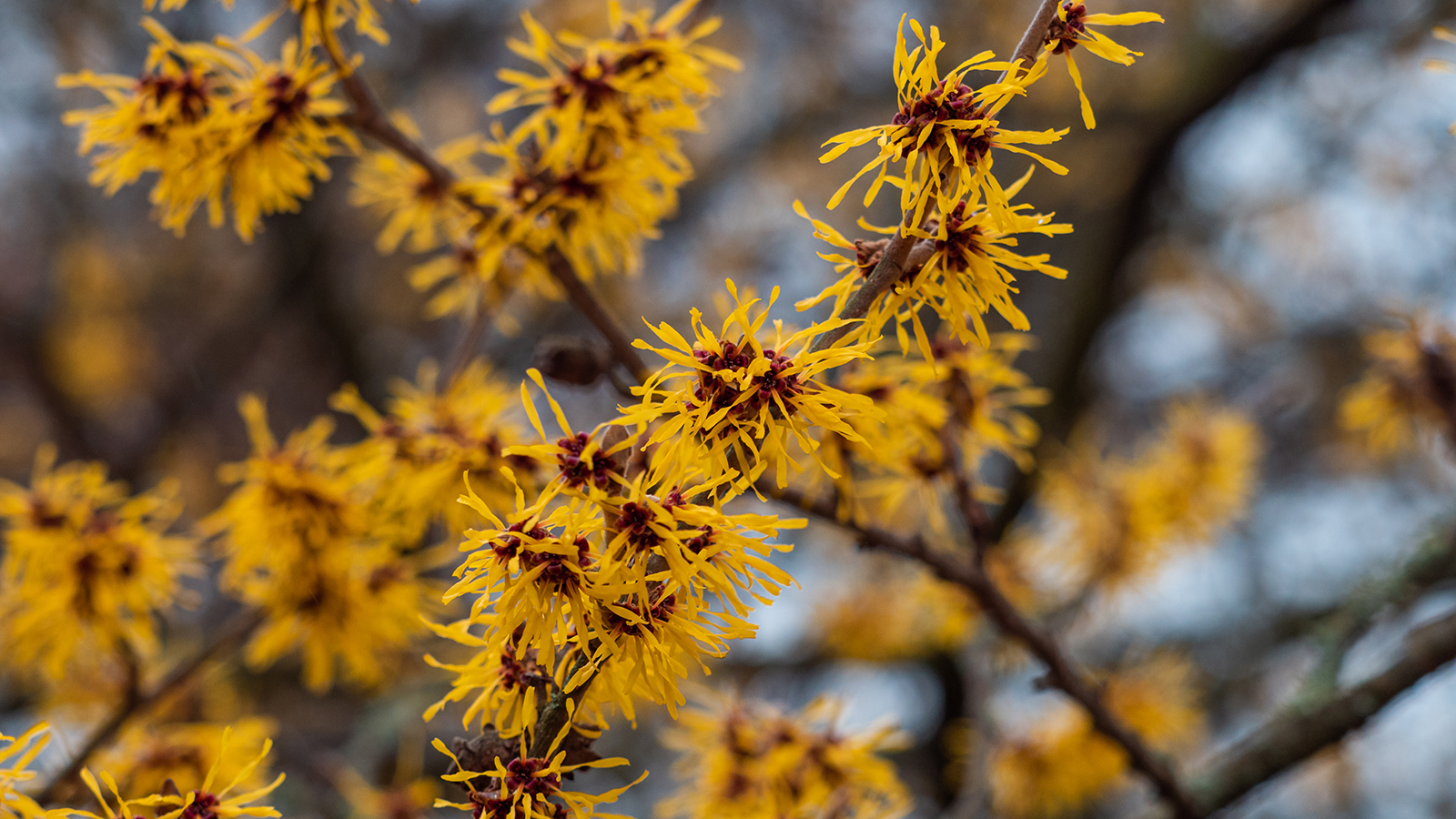
Witch hazel is one of the few shrubs that blossom in winter and early spring, when there's often very little color elsewhere to be seen. Its golden, orange, or sometimes reddish flowers are quite unusual, with slender, twisted petals that create a rather spidery look.
But it's not just the dazzling blooms that will catch your attention. Many varieties also offer a sweet scent that hangs in the air on still days, as well as deciduous leaves that turn buttery or fiery orange in fall, making them one of the best trees for fall color.
Witch hazels are low maintenance trees, which are also exceptionally winter hardy (to USDA zone 3), and are generally tolerant of a range of different conditions, which makes them easy to care for.
From Asia come two winter or spring flowering witch hazels – Hamamelis mollis and Hamamelis japonica. The hybrid between the two species, Hamamelis x intermedia, is also widely grown.
Although they are slow-growing at first, they are well worth the wait. Given space to develop, a witch hazel is an essential addition to your winter garden ideas.
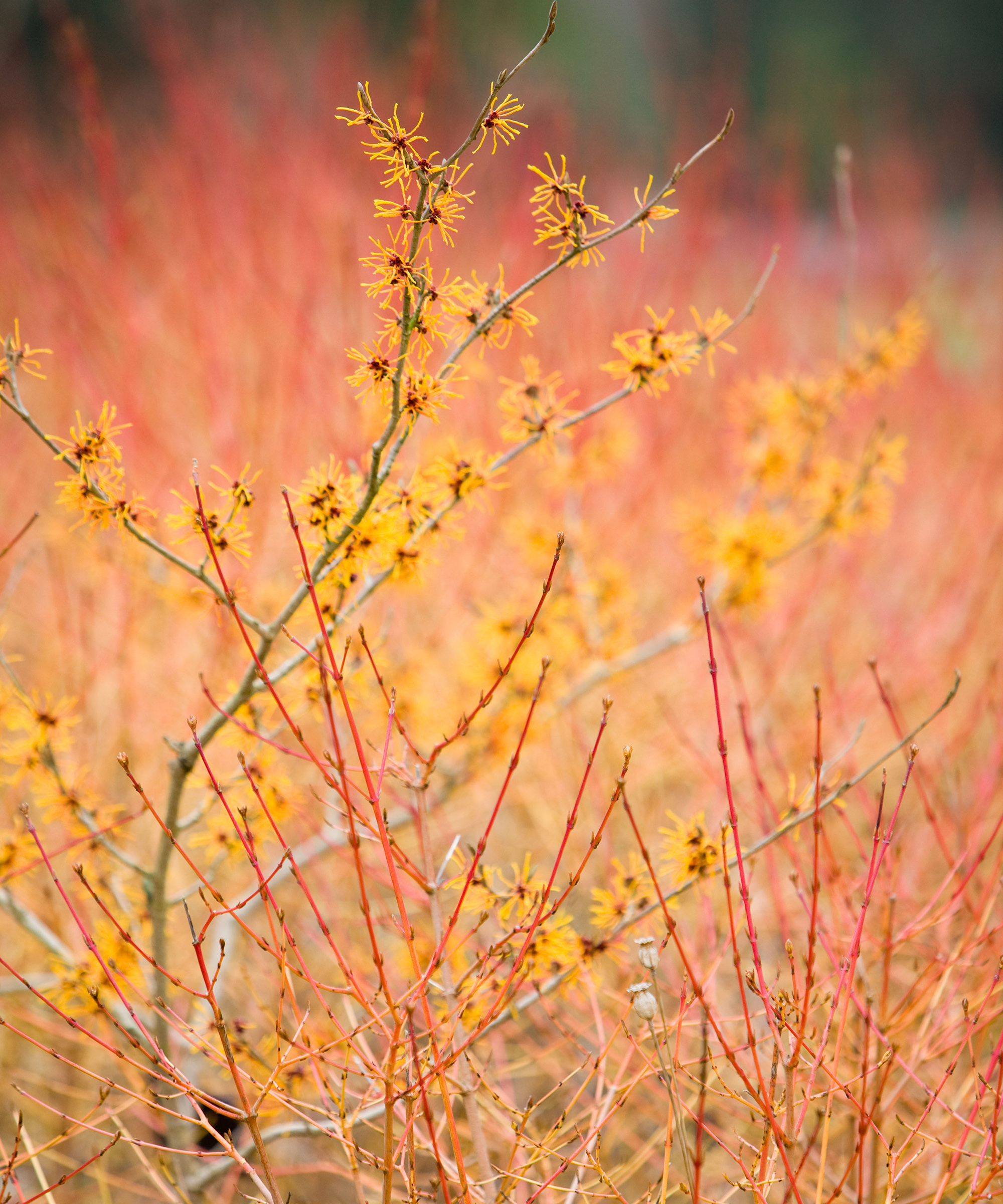
The secrets to successful witch hazel plants
Many nurseries and garden centers offer plants in containers. These are often in gallons or sometimes larger, two or three-gallon containers.
These can be expensive to ship but usually establish quickly after planting. The pot may be removed for shipping, and the plant wrapped in a bag. Planting trees in large containers are also heavy to lift, so get help if you’re buying in person at a garden center or nursery and when unloading and planting at home.
Where to plant witch hazel
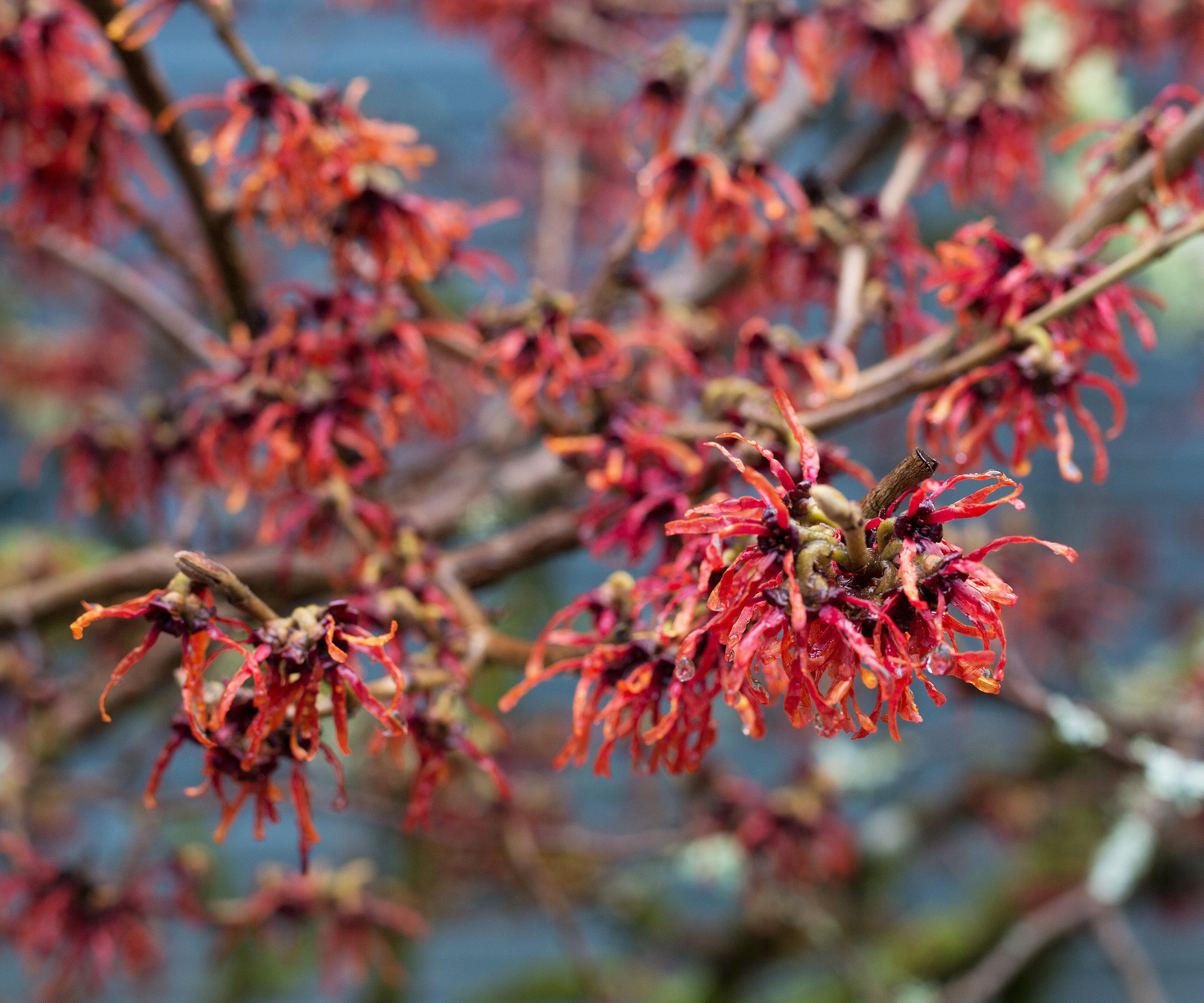
Witch hazels prefer soil types that are acid or neutral. They thrive less well in limey conditions, although improving limey soil with composted bark can be beneficial.
Good drainage is also helpful, as they do not like waterlogged soil. Flowering will be most prolific in full sun, although not if the soil is dry. Dappled shade is often the best compromise.
A site protected from harsh winter wind is also ideal, as the shelter can help concentrate the fragrance as it hangs in the air. For that reason, consider planting your witch hazel near a garden wall or fence. But, ensure there is still plenty of space around it so it can grow into a naturally elegant specimen.
It's also a good idea to grow plants that are dispensable around it – ones that can be pruned or removed, or those that will gradually fade away as the witch hazel develops.
When to plant witch hazel
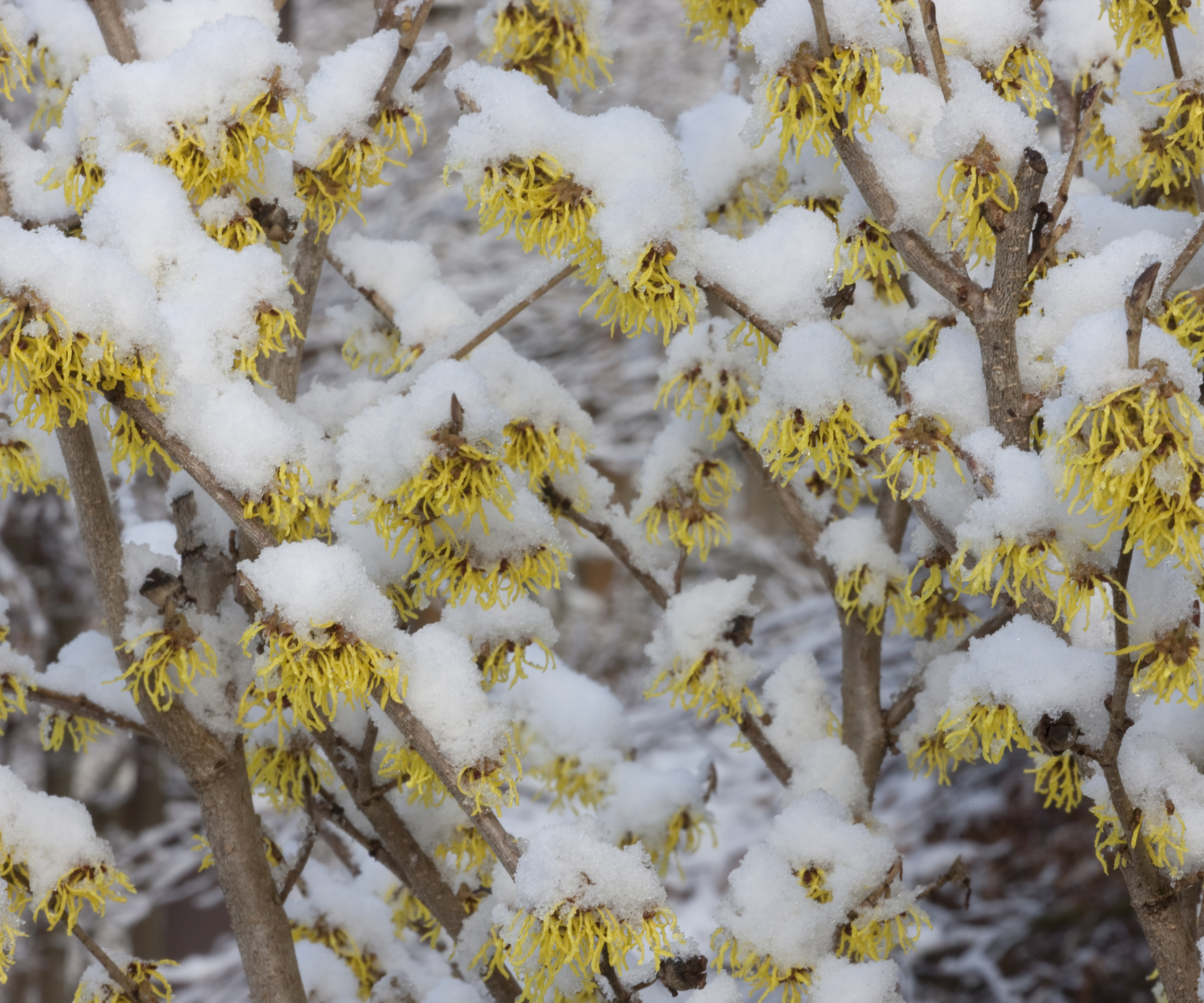
Witch hazels grown in tubes or containers can be planted at any time from late fall to early spring when the ground is not frozen or waterlogged. If conditions are not suitable, keep the plants in a cozy corner until the situation improves.
Witch hazel is also one of the best trees to grow in pots, and if you're going for this approach, you can plant it at any time. Just ensure you provide plenty of water to keep the soil moist if you're planting it during the spring or summer.
Bare root plants are best planted as soon as possible after you receive them but, again, if the ground is frozen, wait until conditions improve.
Shop witch hazel plants
Hamamelis virginiana is a US native variety. The yellow flowers are smaller than Japanese varieties but have a beautifully sweet scent.
A great deal on two shrubs. They arrive only 8in tall however so be prepared to wait for them to grow.
How to plant witch hazel
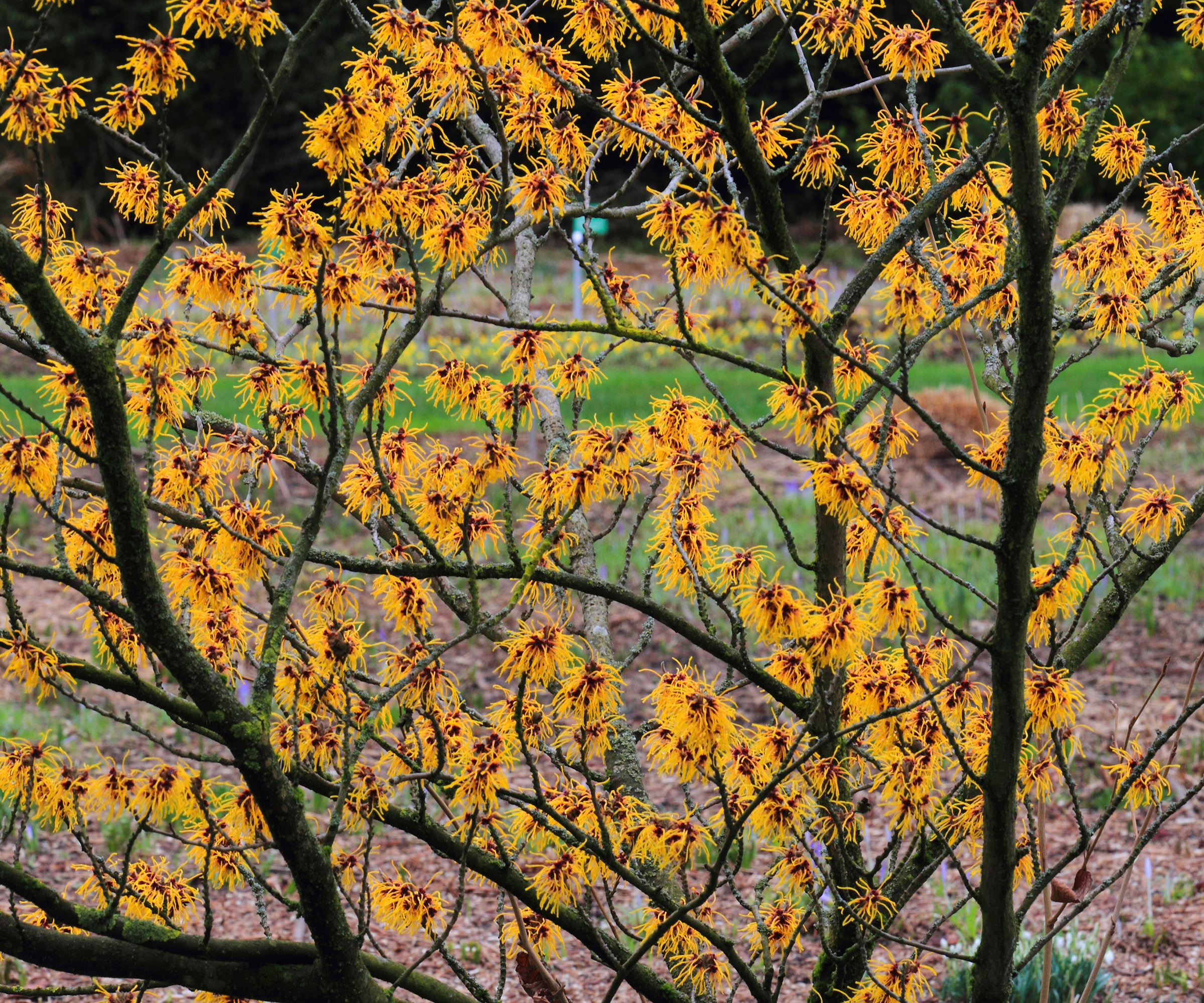
Witch hazel plants need no special planting method. However, a top tip to remember is that they are not deep rooting. So, rather than preparing a deep planting hole, dig plenty of organic matter into a wider area, about a square yard. The hole itself should not be much deeper than the depth of the plant's container.
After watering in, mulch with weed-free compost or soil conditioner. Be sure to choose an acid material for this – composted bark for example – rather than a limey one such as mushroom compost. A common tree mistake is to not check your soil pH before you plant a tree.
How to care for witch hazel
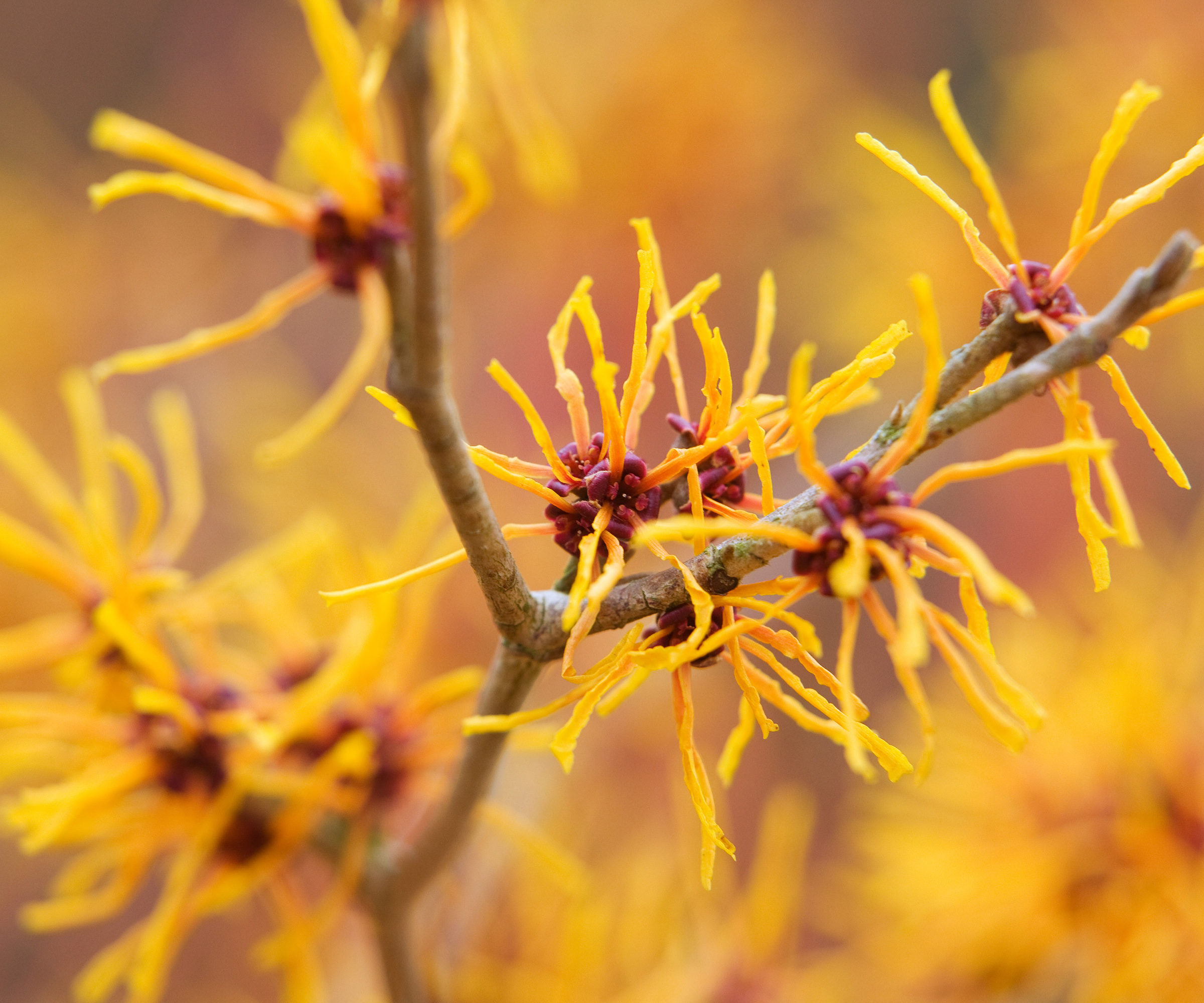
If you're a fan of low maintenance garden border ideas, you'll be pleased to know that witch hazel plant care isn't tricky. In fact, they need little special treatment. What's more, pests and diseases are rarely a problem.
Applying rhododendron fertilizer in the fall, followed by weed-free mulching, will help keep them growing well and suppress weeds. In hot, dry summers, witch hazels will definitely appreciate watering but they don't need wet soil.
How to prune witch hazel
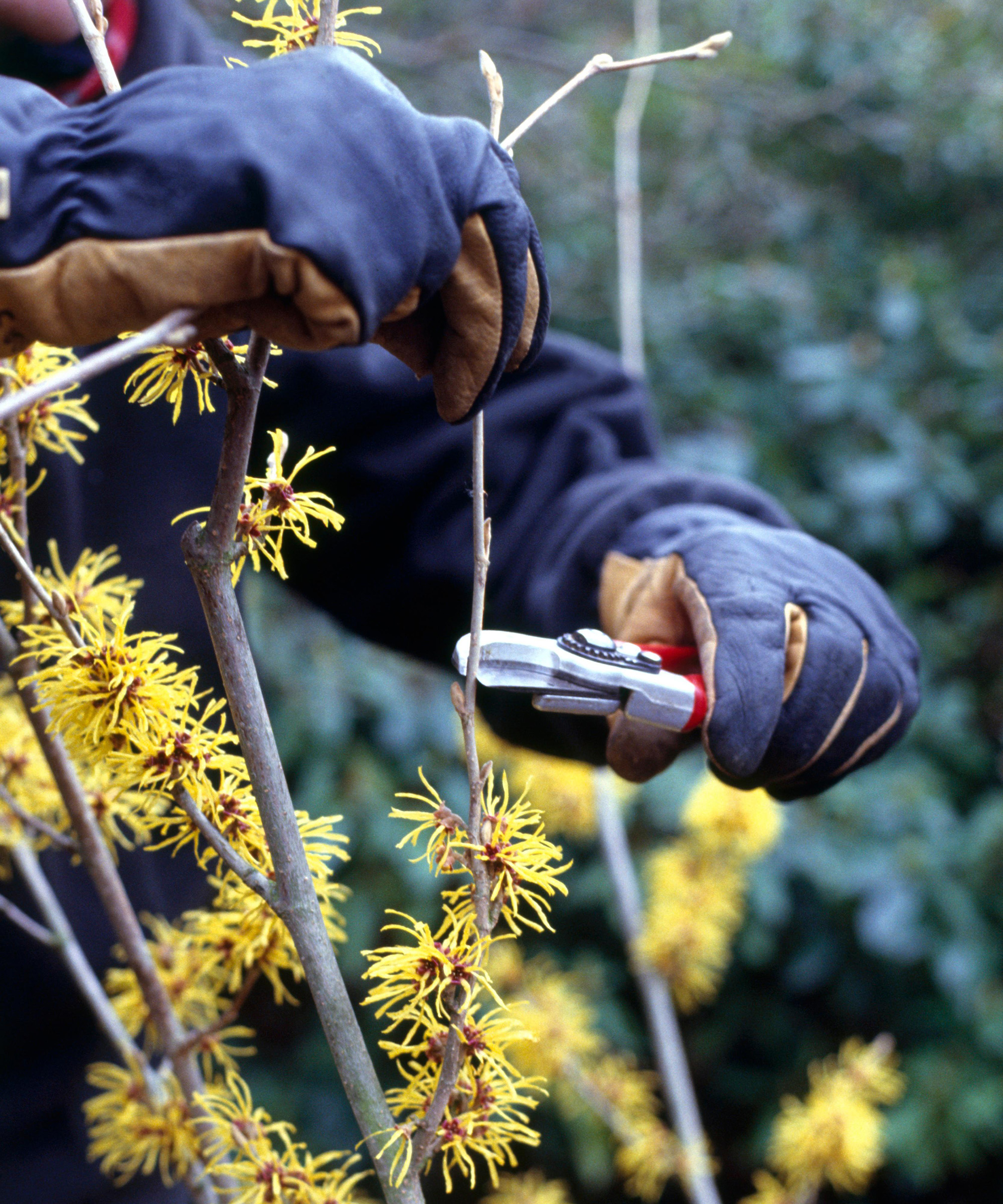
Some shrubs need pruning every year, sometimes twice. However, witch hazel rarely needs pruning at all and can be left to develop its own natural shape.
Only if your witch hazel is damaged should any broken shoots be cut back to healthy growth. Also, if two branches are rubbing together, it's best to remove one of them with your best loppers or pruning shears, ensuring they are clean and sharp.
The elegant growth of a mature witch hazel is one of its joys, so allowing it to mature is almost always the best plan. Some varieties may eventually develop into small trees, but you can do some great landscaping around trees and plant shade-loving perennials and spring flowering bulbs under its branches.
If your witch hazel and a nearby shrub are maturing together and getting in each other's way, think carefully before cutting one of them back. Most shrubs respond well to thoughtful pruning to restrict their size, but few shrubs have such an attractive branch structure as a witch hazel. Because of this, the other shrub will usually be the one to restrict.
How to propagate witch hazel
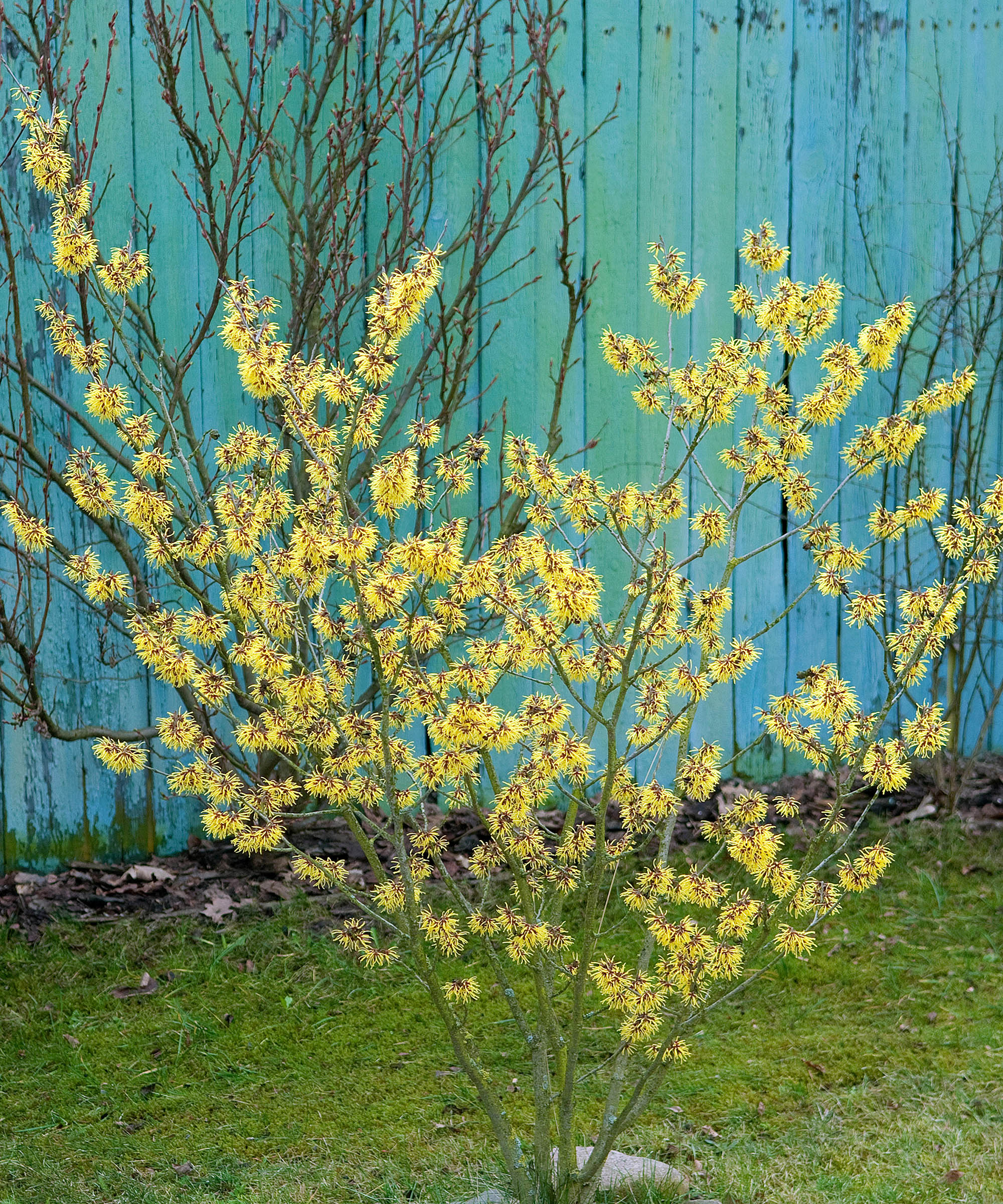
Witch hazels are not easy to propagate. It's possible to take plant cuttings in spring, but even professional propagators find that the success rate is very low.
So, in the nursery, they're usually propagated by grafting. That is, a piece of the named variety is joined to a rootstock – the root of a different species that is easy to grow from seed and develops quickly but has small flowers. A wild American species is often used.
But sometimes, as the plant matures and is growing well, a shoot may suddenly grow from below ground at the base of the stems. These suckers from the rootstock are often very vigorous and grow vertically up through the rest of the plant. They are not the named variety that looks so wonderful in flower, so these suckers should be cut out as low down as possible otherwise they will take over.
Overall, grafting witch hazel is skilled and labor-intensive work which accounts for the fact that these plants are usually more expensive than most other shrubs.
FAQs
Why isn't my witch hazel scented?
If you're after a scented winter flowering shrub, it's all a question of choosing the right variety. Some witch hazels are strongly fragranced and some have very little scent.
Top choices include 'Aphrodite' (which is orange), 'Arnold Promise' and 'Pallida' (both of which are pale yellow), 'Aurora' (bronzed yellow), or 'Vesna' (orange-yellow).
Are witch hazels native to the US?
There is a North American native witch hazel, otherwise known as Hamamelis virginiana. Unlike the Asian witch hazel, it is a fall-flowering species. It grows in forest clearings and margins, in thin woodland and along shady highways across the east, from Quebec south to Texas and Florida.
The American witch hazel has fragrant yellow flowers. Although the blooms are smaller than the Asian witch hazel, it still has a delightfully sweet scent.
The Ozark witch hazel (Hamamelis vernalis), is another very small-flowered but heavily scented species, found in Missouri and Arkansas. This rare specimen has orange or yellow flowers that bloom in spring.
Now you know how to grow witch hazel, and just how simple it really is, you may well want one to add to your own backyard when you're planning a winter garden.







